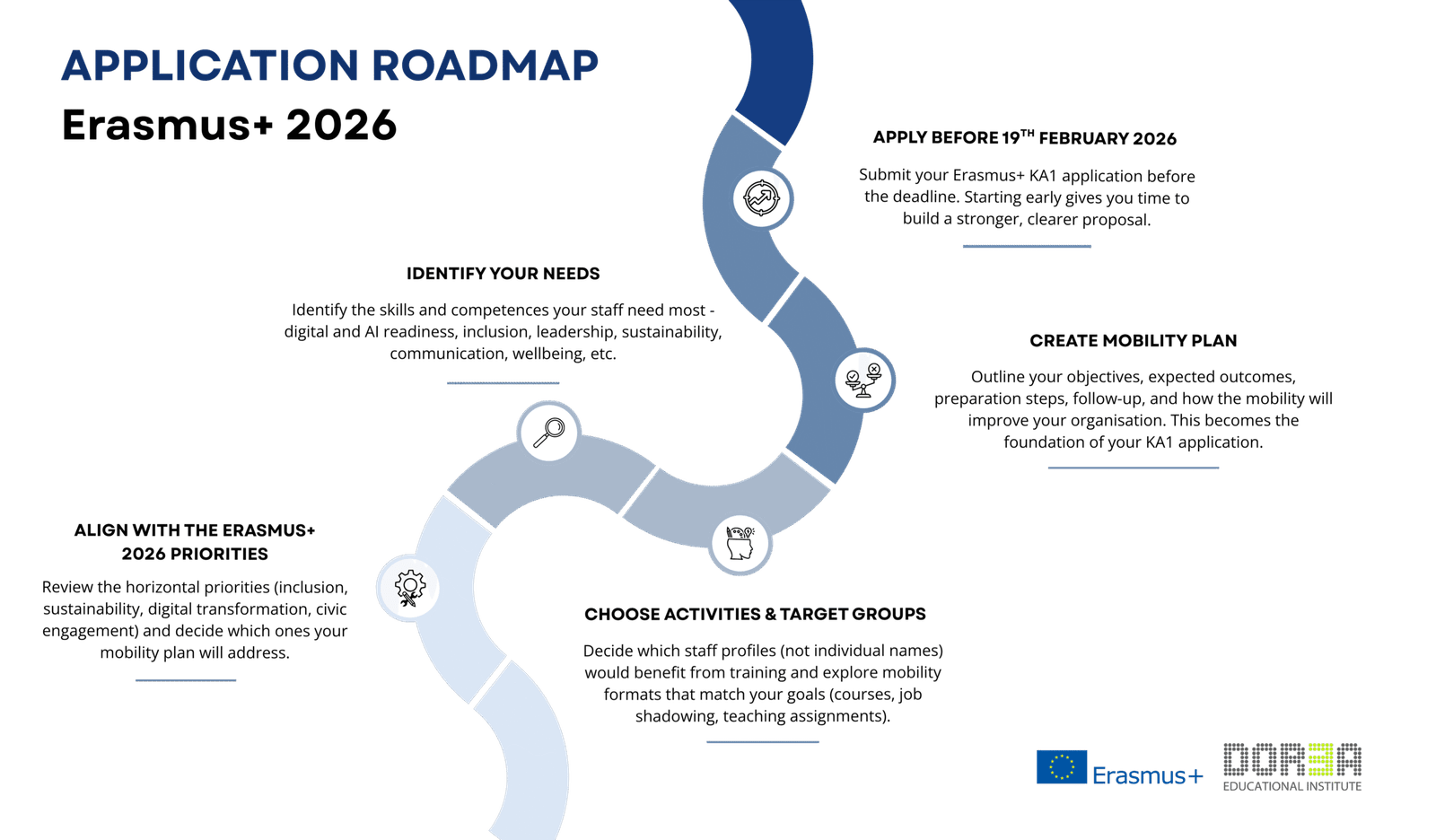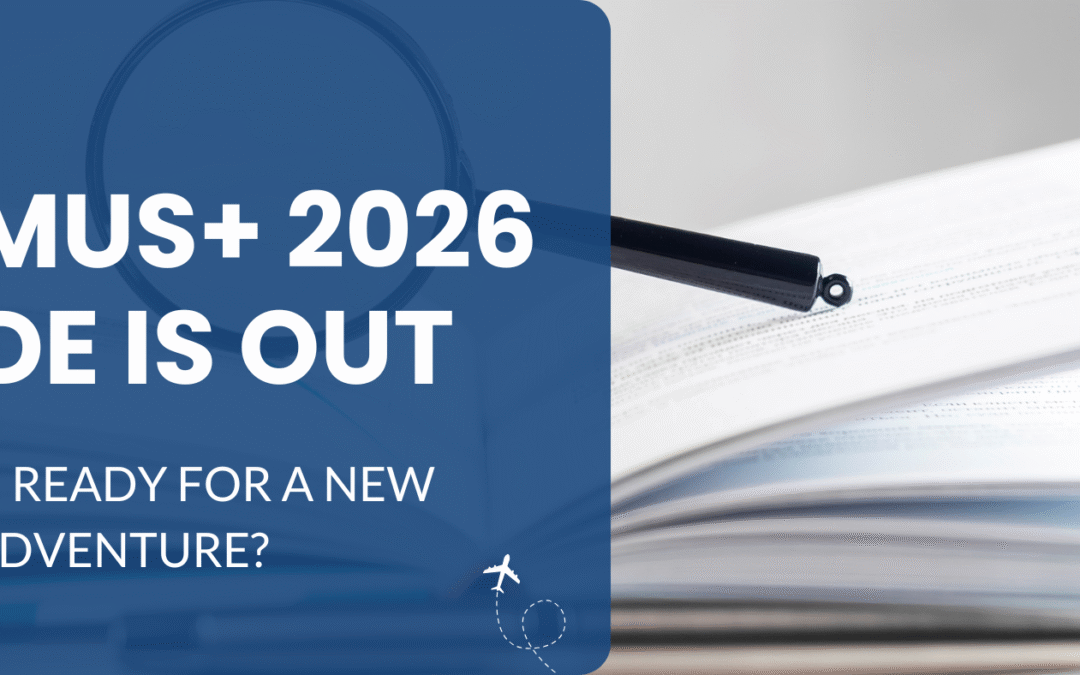Erasmus+ 2026 guide: Essential Information for Schools, VET and Adult Education
The Erasmus+ Programme Guide for 2026 has now been published, and organisations across Europe are beginning to plan their mobility activities for the coming year. To help busy educators and administrative staff, we have summarised the most important information you need to know – without the complexity and without unnecessary details. Below is an overview of the new deadlines, priorities, and mobility opportunities for school education, VET providers, and adult learning centres under Key Action 1.
1. Erasmus+ 2026: what you need to know at a glance
Erasmus+ 2026 continues with the same core direction as 2025, with no major changes to priorities. Institutions can continue building on their existing mobility strategies and development plans. The four horizontal priorities remain:
- Inclusion and Diversity
- Environment & Climate Action (Green Skills)
- Digital Transformation (including AI readiness)
- Participation in Democratic Life
These priorities apply to all sectors and should guide every mobility plan.
2. 2026 application deadline
The main deadline for KA1 mobility projects is: 19 February 2026 at 12:00 (Brussels Time)
This deadline applies to:
- School education mobility
- VET mobility
- Adult education mobility
- Short-term projects
- Accredited organisations (following NA instructions)
Planning early is essential, as February arrives far quicker than expected for most institutions.
3. Who can apply?
School Education
- Pre-primary, primary and secondary schools
- Special education institutions
- School authorities and consortia
Vocational Education and Training (VET)
- VET schools
- Training centres
- Organisations offering work-based learning
Adult Education
- Adult learning centres
- NGOs with educational programmes
- Community learning organisations
- Local authorities involved in adult learning
4. What types of staff mobilities are possible?
Under Erasmus+ KA1, staff from all three sectors can take part in:
- Structured courses and training events (2–10 days)
- Job shadowing at a hosting organisation (2–60 days)
- Teaching/training assignments abroad (2–365 days)
- Blended mobilities (online + physical components)
These activities must support professional development and align with one or more Erasmus+ priorities. All learning mobility activities must also be:
- Educational: intended for participants to improve or gain new knowledge, skills, competencies and attitudes
- Transnational: involving interactions between people from different countries with the purpose of mutual exchange and learning
- Structured: having a clear methodology, learning programme and planned learning outcomes
- Strategic: contributing to a wider set of project or accreditation objectives.
5. Short-term projects vs accredited projects
Short-Term Projects (6–18 months). Ideal for organisations beginning with Erasmus+ or running a small number of mobilities.
Accredited Projects. For organisations with an Erasmus+ Accreditation. These receive funding regularly and follow long-term development goals.
6. What impact should a Mobility Project have?
Erasmus+ expects mobility projects to contribute to:
- Improved teaching and training practices
- Stronger digital and language skills
- More inclusive learning environments
- Higher institutional capacity and innovation
- Increased European cooperation
- Better career development and staff motivation
7. What to do now – a quick roadmap for busy institutions


